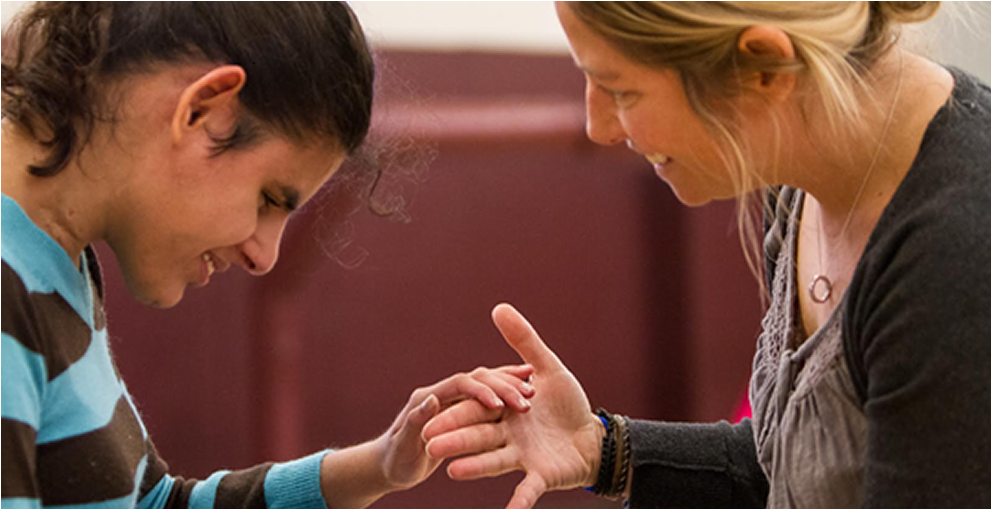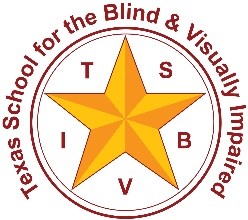Factors to Consider
The instructor’s level of comfort with proximity

Early strategies may require that adults position themselves in close physical contact with our students. Often, this will be the only way they can get information about what we are doing. Each of us brings into the mix our own personality and level of comfort with close physical interaction. There are also social norms that make close physical interactions with older students challenging. For example, we would not let an older student sit in an adult’s lap. There are many ways for the instructor to position him/herself in relation to the student’s body to provide the tactile support the student may need, such as sitting knee-to-knee or side-by-side.
Previous experience
Our kids bring a variety of experiences with people and objects, along with associations they have or have not built. These associations may be positive or negative. Even if a child has had all the same experiences as a non-disabled peer, his or her perceptions of the experience will be vastly different.
- Incidental Learning: When a child experiences the world using all of the senses, he or she can gather a lot of information just by observing things that are happening nearby. Even when hearing is intact, auditory processing difficulties may be present and undiagnosed. Auditory information that is not linked with any other senses may not give the child very much usable information, even when there are no processing problems. When the most reliable way of sensing the environment is through touch, the only things that are perceived about a situation are the things with which the child has come in direct physical contact. This vastly influences what a person does and does not know about.
- Sensory processing differences: When a person has neurological differences, information that is processed through intact sensory channels can be interrupted before it gets to the area of the brain that processes that information. The information may also be processed differently when it does get to the brain. That can cause our students’ perceptions of the world to be very atypical. Neurological differences include brain malformation, brain damage at birth or later, autism, etc.
People skills vs. object skills
Some students have better people skills, some have better object skills; both are important and need to be considered. Strategies for improving your student’s skills in either area will depend on their emotional and social developmental level and possibly other factors. For example, a child with autism may be more comfortable interacting with objects rather than people. Some children show little interest in objects or materials around them, preferring to interact with their own bodies. Some children are overly dependent on adults in all their activities and may be content to do little without the support of an adult.
Excessive stress and learning do not mix
Stress can keep neural pathways from forming and constant stress over time can break down neural pathways that have already formed, making people forget things they already know. We need to create learning environments that minimize stress for our students so that they can build and strengthen neural pathways.
Getting to Know You
All children, but most especially children with vision and hearing loss, benefit from having time to get to know the people who work with them. They need to feel safe and secure. They need to establish a connection or bond with others.
One way to begin to build a connection with a student and help them feel safe working with you is to use the strategies of offering and imitation. These can include the type of activities that Dr. Jan van Dijk refers to as resonance activities where the adult mirrors the movements of the child. Dr. Lilli Nielsen’s Phase 1 Offering and Phase 2 Imitation techniques are also beneficial for relationship building.
In the video below, we see a young boy, Taylor, with his teacher, Amy. She is offering him a variety of objects to play with and makes no demands that he do anything with these objects. She is building his trust in working with her.
Resources
Incidental Learning
- Dad, Where’s the Plunger? by Richard Holloway
- In-Between Being Deaf-Blind by Christy Hill
- Minimal Losses Major Implications by Jenny Lace
Sensory Processing Differences
- See Building Security for further discussion.
Excessive Stress and Learning Do Not Mix
- Development Through Relationships: Entering the Social World by Jan van Dijk

